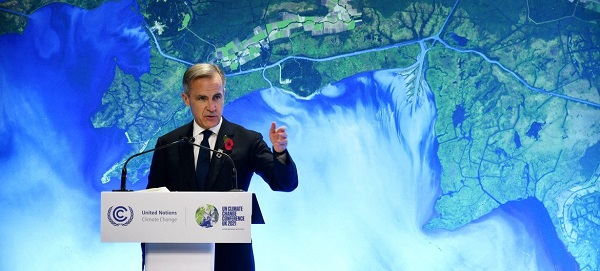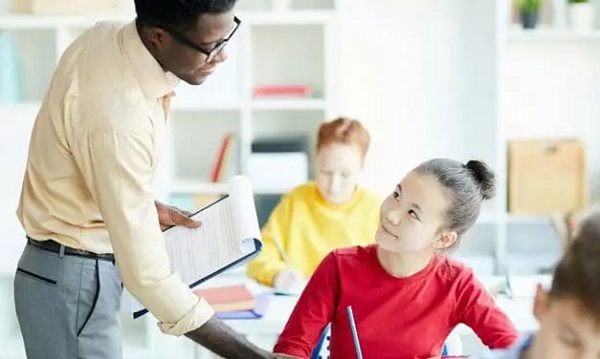Economy
Canada’s flippant rejection of our generous natural resource inheritance

From the Macdonald Laurier Institute
By David Polansky
The fanaticism of environmental elitists has made people unwilling to discuss the serious human and economic costs of poorly considered environmental policies.
Strategic energy resources have long been associated with some of the world’s most odious regimes. Above the surfaces that cover rich mineral and fossil fuel deposits one finds religious fanatics, brutal tyrants, and corrupt kleptocracies. And yet with one resource rich nation in particular we find not Wahhabism or gangsterism but Mounties and maple syrup.
Canada is the world’s second-largest country and its lands and territorial waters hold some of the world’s most substantial oil and gas reserves. Looking at its energy policies, one might think it was Belgium. Canada’s resource wealth would seem to be a case of the good guys winning for once. Why then does Canada flee in shame from its geological (and geopolitical) situation?
The answer is that Canada’s elites have long ceased to think in terms of its national interests or fiscal priorities but have adopted a naïve environmental dogmatism. Since it ratified the Paris Agreement in 2015, Canada has embraced an ambitious, top-down, international agenda to achieve “net-zero” emissions and limit global climate change.
But the fact is that, despite its size, In absolute terms, its output has risen marginally over the past half century, even as its population has nearly doubled. And embracing this climate agenda is hardly a perfunctory matter: it will continue to result in declining incomes for the average Canadian as well as a weakened trade balance for Canada as a whole. Canada’s economy is being sacrificed on the altar of elite preferences divorced from the realities of how Canadians actually heat our homes or put food on our tables.
An honest assessment of Canada’s flippant rejection of its generous natural resource inheritance looks more like serial masochism than virtue.
In the wake of Russia’s invasion of Ukraine and the global sanctions it triggered, The irony is that with so much of Russia’s supply coming offline, Canada could have had a remarkable opportunity to fill the vacuum with its own production capacity.
Despite being the world’s sixth-largest producer of natural gas, Canada lacks even a single export terminal for LNG. When critics of Canadian LNG production pointed to the unfeasibility of meeting overseas demand, despite the entreaties of the Germans and other Europeans, they were only technically correct. Canada couldn’t easily meet overseas demand because our regulatory regime has held up the construction of as many as 18 proposed LNG projects over the past decade, largely due to climate concerns.
Ironically, Germany—the continent’s greatest industrial power—needed to reactivate discontinued coal plants to meet its energy demands (hardly an ideal outcome from an environmental standpoint).
Much of the shortfall caused by sanctions on Russia was also made up by LNG contributions from Norway—whose leaders have maintained that reducing LNG output would only cede the market to authoritarian regimes with weaker regulatory controls around their energy industries from both environmental and human rights standpoints. Thankfully, Norway’s government moved forward with LNG production and export despite past pressure from environmentalist in the European Union that attempted to curtail its fossil fuel extraction.
Canada could have followed Norway’s level-headed approach and in that could have helped replace Russian oil in the aftermath of the Ukraine invasion. The curtailing of Canada’s energy infrastructure is not imposed by a physical limitation in the world, nor was it commanded from the heavens; it was ordered by the Canadian Net-Zero Emissions Accountability Act of 2021, supplemented by ambitious plans promulgated by Ottawa to reshape the institutions and practices of the entire country in pursuit of this quixotic goal. Not just the oil-and-gas sector, but housing, construction, agriculture, etc. must bend before Net Zero.
One can already hear activist outrage that, “to oppose this agenda is to choose temporary profits over the preservation of human life and the planet that supports it.” This rhetoric has proven effective in advancing environmental policies but it is also a false dichotomy, as it treats the dilemma as one of “good vs. greed” rather than one of complex competing goods.
A society that has signed on to this sort of imposed austerity is one with less money for infrastructure, entrepreneurship, healthcare, and defense. A lack of investment in these sectors also brings serious and immediate human costs. And further, the real issue is not the value of environmental stewardship or of taking steps to moderate consumption—both of which are worthy goals in and of themselves—but of blindly adhering to preselected targets at all costs. These apparently unassailable commitments have deprived Canada of the kind of flexible management of strategic interests that prudent political leadership requires.
Indeed, the unrealism of these climate ideals has produced systemic dissembling across the country’s major institutions, given the pressure to comply regardless of the efficacy of their practices. In other words, the fanaticism of environmental elitists has made people unwilling to debate the issues at hand or to even discuss the serious human and economic costs of poorly considered environmental policies.
The Environmental, Social, and Governance (ESG) model has had the effect of placing certain questions effectively beyond the reach of politics. But questions of policy—as environmental and energy questions surely are—are by their nature political; they have inevitable tradeoffs that should be a matter of debate with an eye to our collective interests.
Instead, we have an intolerant environmental elitism that obstructs the open and honest public deliberation that is the hallmark of democratic politics. A more truthful and practical approach wouldn’t necessarily promote any one policy, but it would allow for public discussion that recognizes the genuine toll that environmental policy takes on Canada’s domestic well-being and our standing in the world.
David Polansky is a Toronto-based writer and political theorist. Read him at strangefrequencies.co or find him on X @polanskydj.
Alberta
Federal budget: It’s not easy being green

From Resource Works
Canada’s climate rethink signals shift from green idealism to pragmatic prosperity.
Bill Gates raised some eyebrows last week – and probably the blood pressure of climate activists – when he published a memo calling for a “strategic pivot” on climate change.
In his memo, the Microsoft founder, whose philanthropy and impact investments have focused heavily on fighting climate change, argues that, while global warming is still a long-term threat to humanity, it’s not the only one.
There are other, more urgent challenges, like poverty and disease, that also need attention, he argues, and that the solution to climate change is technology and innovation, not unaffordable and unachievable near-term net zero policies.
“Unfortunately, the doomsday outlook is causing much of the climate community to focus too much on near-term emissions goals, and it’s diverting resources from the most effective things we should be doing to improve life in a warming world,” he writes.
Gates’ memo is timely, given that world leaders are currently gathered in Brazil for the COP30 climate summit. Canada may not be the only country reconsidering things like energy policy and near-term net zero targets, if only because they are unrealistic and unaffordable.
It could give some cover for Canadian COP30 delegates, who will be at Brazil summit at a time when Prime Minister Mark Carney is renegotiating his predecessor’s platinum climate action plan for a silver one – a plan that contains fewer carbon taxes and more fossil fuels.
It is telling that Carney is not at COP30 this week, but rather holding a summit with Alberta Premier Danielle Smith.
The federal budget handed down last week contains kernels of the Carney government’s new Climate Competitiveness Strategy. It places greater emphasis on industrial strategy, investment, energy and resource development, including critical minerals mining and LNG.
Despite his Davos credentials, Carney is clearly alive to the fact it’s a different ballgame now. Canada cannot afford a hyper-focus on net zero and the green economy. It’s going to need some high octane fuel – oil, natural gas and mining – to prime Canada’s stuttering economic engine.
The prosperity promised from the green economy has not quite lived up to its billing, as a recent Fraser Institute study reveals.
Spending and tax incentives totaling $150 billion over a decade by Ottawa, B.C, Ontario, Alberta and Quebec created a meagre 68,000 jobs, the report found.
“It’s simply not big enough to make a huge difference to the overall performance of the economy,” said Jock Finlayson, chief economist for the Independent Contractors and Business Association and co-author of the report.
“If they want to turn around what I would describe as a moribund Canadian economy…they’re not going to be successful if they focus on these clean, green industries because they’re just not big enough.”
There are tentative moves in the federal budget and Climate Competitiveness Strategy to recalibrate Canada’s climate action policies, though the strategy is still very much in draft form.
Carney’s budget acknowledges that the world has changed, thanks to deglobalization and trade strife with the U.S.
“Industrial policy, once seen as secondary to market forces, is returning to the forefront,” the budget states.
Last week’s budget signals a shift from regulations towards more investment-based measures.
These measures aim to “catalyse” $500 billion in investment over five years through “strengthened industrial carbon pricing, a streamlined regulatory environment and aggressive tax incentives.”
There is, as-yet, no commitment to improve the investment landscape for Alberta’s oil industry with the three reforms that Alberta has called for: scrapping Bill C-69, a looming oil and gas emissions cap and a West Coast oil tanker moratorium, which is needed if Alberta is to get a new oil pipeline to the West Coast.
“I do think, if the Carney government is serious about Canada’s role, potentially, as an global energy superpower, and trying to increase our exports of all types of energy to offshore markets, they’re going to have to revisit those three policy files,” Finlayson said.
Heather Exner-Pirot, director of energy, natural resources and environment at the Macdonald-Laurier Institute, said she thinks the emissions cap at least will be scrapped.
“The markets don’t lie,” she said, pointing to a post-budget boost to major Canadian energy stocks. “The energy index got a boost. The markets liked it. I don’t think the markets think there is going to be an emissions cap.”
Some key measures in the budget for unlocking investments in energy, mining and decarbonization include:
- incentives to leverage $1 trillion in investment over the next five years in nuclear and wind power, energy storage and grid infrastructure;
- an expansion of critical minerals eligible for a 30% clean technology manufacturing investment tax credit;
- $2 billion over five years to accelerate critical mineral production;
- tax credits for turquoise hydrogen (i.e. hydrogen made from natural gas through methane pyrolysis); and
- an extension of an investment tax credit for carbon capture utilization and storage through to 2035.
As for carbon taxes, the budget promises “strengthened industrial carbon pricing.”
This might suggest the government’s plan is to simply simply shift the burden for carbon pricing from the consumer entirely onto industry. If that’s the case, it could put Canadian resource industries at a disadvantage.
“How do we keep pushing up the carbon price — which means the price of energy — for these industries at a time when the United States has no carbon pricing at all?” Finlayson wonders.
Overall, Carney does seem to be moving in the right direction in terms of realigning Canada’s energy and climate policies.
“I think this version of a Liberal government is going to be more focused on investment and competitiveness and less focused around the virtue-signaling on climate change, even though Carney personally has a reputation as somebody who cares a lot about climate change,” Finlayson said.
“It’s an awkward dance for them. I think they are trying to set out a different direction relative to the Trudeau years, but they’re still trying to hold on to the Trudeau climate narrative.”
Pictured is Mark Carney at COP26 as UN Special Envoy on Climate Action and Finance. He is not at COP30 this week. UNRIC/Miranda Alexander-Webber
Resource Works News
Business
Carney government needs stronger ‘fiscal anchors’ and greater accountability

From the Fraser Institute
By Tegan Hill and Grady Munro
Following the recent release of the Carney government’s first budget, Fitch Ratings (one of the big three global credit rating agencies) issued a warning that the “persistent fiscal expansion” outlined in the budget—characterized by high levels of spending, borrowing and debt accumulation—will erode the health of Canada’s finances and could lead to a downgrade in Canada’s credit rating.
Here’s why this matters. Canada’s credit rating impacts the federal government’s cost of borrowing money. If the government’s rating gets downgraded—meaning Canadian federal debt is viewed as an increasingly risky investment due to fiscal mismanagement—it will likely become more expensive for the government to borrow money, which ultimately costs taxpayers.
The cost of borrowing (i.e. the interest paid on government debt) is a significant part of the overall budget. This year, the federal government will spend a projected $55.6 billion on debt interest, which is more than one in every 10 dollars of federal revenue, and more than the government will spend on health-care transfers to the provinces. By 2029/30, interest costs will rise to a projected $76.1 billion or more than one in every eight dollars of revenue. That’s taxpayer money unavailable for programs and services.
Again, if Canada’s credit rating gets downgraded, these costs will grow even larger.
To maintain a good credit rating, the government must prevent the deterioration of its finances. To do this, governments establish and follow “fiscal anchors,” which are fiscal guardrails meant to guide decisions regarding spending, taxes and borrowing.
Effective fiscal anchors ensure governments manage their finances so the debt burden remains sustainable for future generations. Anchors should be easily understood and broadly applied so that government cannot get creative with its accounting to only technically abide by the rule, but still give the government the flexibility to respond to changing circumstances. For example, a commonly-used rule by many countries (including Canada in the past) is a ceiling/target for debt as a share of the economy.
The Carney government’s budget establishes two new fiscal anchors: balancing the federal operating budget (which includes spending on day-to-day operations such as government employee compensation) by 2028/29, and maintaining a declining deficit-to-GDP ratio over the years to come, which means gradually reducing the size of the deficit relative to the economy. Unfortunately, these anchors will fail to keep federal finances from deteriorating.
For instance, the government’s plan to balance the “operating budget” is an example of creative accounting that won’t stop the government from borrowing money each year. Simply put, the government plans to split spending into two categories: “operating spending” and “capital investment” —which includes any spending or tax expenditures (e.g. credits and deductions) that relates to the production of an asset (e.g. machinery and equipment)—and will only balance operating spending against revenues. As a result, when the government balances its operating budget in 2028/29, it will still incur a projected deficit of $57.9 billion when spending on capital is included.
Similarly, the government’s plan to reduce the size of the annual deficit relative to the economy each year does little to prevent debt accumulation. This year’s deficit is expected to equal 2.5 per cent of the overall economy—which, since 2000, is the largest deficit (as a share of the economy) outside of those run during the 2008/09 financial crisis and the pandemic. By measuring its progress off of this inflated baseline, the government will technically abide by its anchor even as it runs relatively large deficits each and every year.
Moreover, according to the budget, total federal debt will grow faster than the economy, rising from a projected 73.9 per cent of GDP in 2025/26 to 79.0 per cent by 2029/30, reaching a staggering $2.9 trillion that year. Simply put, even the government’s own fiscal plan shows that its fiscal anchors are unable to prevent an unsustainable rise in government debt. And that’s assuming the government can even stick to these anchors—which, according to a new report by the Parliamentary Budget Officer, is highly unlikely.
Unfortunately, a federal government that can’t stick to its own fiscal anchors is nothing new. The Trudeau government made a habit of abandoning its fiscal anchors whenever the going got tough. Indeed, Fitch Ratings highlighted this poor track record as yet another reason to expect federal finances to continue deteriorating, and why a credit downgrade may be on the horizon. Again, should that happen, Canadian taxpayers will pay the price.
Much is riding on the Carney government’s ability to restore Canada’s credibility as a responsible fiscal manager. To do this, it must implement stronger fiscal rules than those presented in the budget, and remain accountable to those rules even when it’s challenging.
-

 Alberta2 days ago
Alberta2 days agoSchool defunding petition in Alberta is a warning to parents
-

 Agriculture2 days ago
Agriculture2 days agoBovaer Backlash Update: Danish Farmers Get Green Light to Opt Out as UK Arla Trial Abruptly Ends!
-

 International1 day ago
International1 day agoBBC boss quits amid scandal over edited Trump footage
-

 Daily Caller1 day ago
Daily Caller1 day agoMcKinsey outlook for 2025 sharply adjusts prior projections, predicting fossil fuels will dominate well after 2050
-

 Agriculture1 day ago
Agriculture1 day agoFarmers Take The Hit While Biofuel Companies Cash In
-

 Business22 hours ago
Business22 hours agoCarney’s Floor-Crossing Campaign. A Media-Staged Bid for Majority Rule That Erodes Democracy While Beijing Hovers
-

 Frontier Centre for Public Policy1 day ago
Frontier Centre for Public Policy1 day agoNotwithstanding Clause Is Democracy’s Last Line Of Defence
-

 Business1 day ago
Business1 day agoCarney government needs stronger ‘fiscal anchors’ and greater accountability







